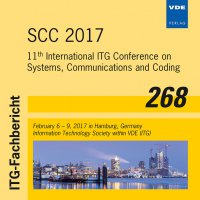On Spectral Shaping of Multicarrier Waveforms Employing FIR-Filtering and Active Interference Cancellation
Conference: SCC 2017 - 11th International ITG Conference on Systems, Communications and Coding
02/06/2017 - 02/09/2017 at Hamburg, Germany
Proceedings: SCC 2017
Pages: 6Language: englishTyp: PDF
Personal VDE Members are entitled to a 10% discount on this title
Authors:
Wang, Xiaojie; Kienzle, Kevin; Brink, Stephan ten (Institute of Telecommunications, Pfaffenwaldring 47, University of Stuttgart, 70569 Stuttgart, Germany)
Abstract:
For next generation wireless communication systems (also referred to as “5G”), many advanced multicarrier waveform techniques have recently been proposed to enhance the system performance beyond today’s most prominent multicarrier technique, namely, orthogonal frequency division multiplexing (OFDM). Despite several advantages of OFDM, its less pronounced frequency localization property and considerable out-of-band (OOB) emissions make it less suited for many applications in 5G such as massive machine communications and Internet of Things. In order to reduce the high OOB emissions, novel multicarrier modulation techniques like universal filtered multicarrier (UFMC) and generalized frequency division multiplexing (GFDM) employing improved pulse shaping are currently being investigated. An important aspect is “spectral shaping”, i.e., generating spectral notches in OFDM signals, as already explored in the past for applications in ultra-wideband (UWB) systems. In this paper, we compare the effectiveness of suppressing OOB emissions employing FIR-filtering and active interference cancellation (AIC), respectively, in the context of 5G scenarios. Moreover, we propose a novel scheme to combine AIC and FIR-filtering into one multicarrier transmission system, i.e., UFMC with AIC. The simulation results show that the proposed AIC algorithm for UFMC reduces OOB emissions more effectively and introduces less spectral overshoot compared to the conventional method while hardly increasing computational complexity.


